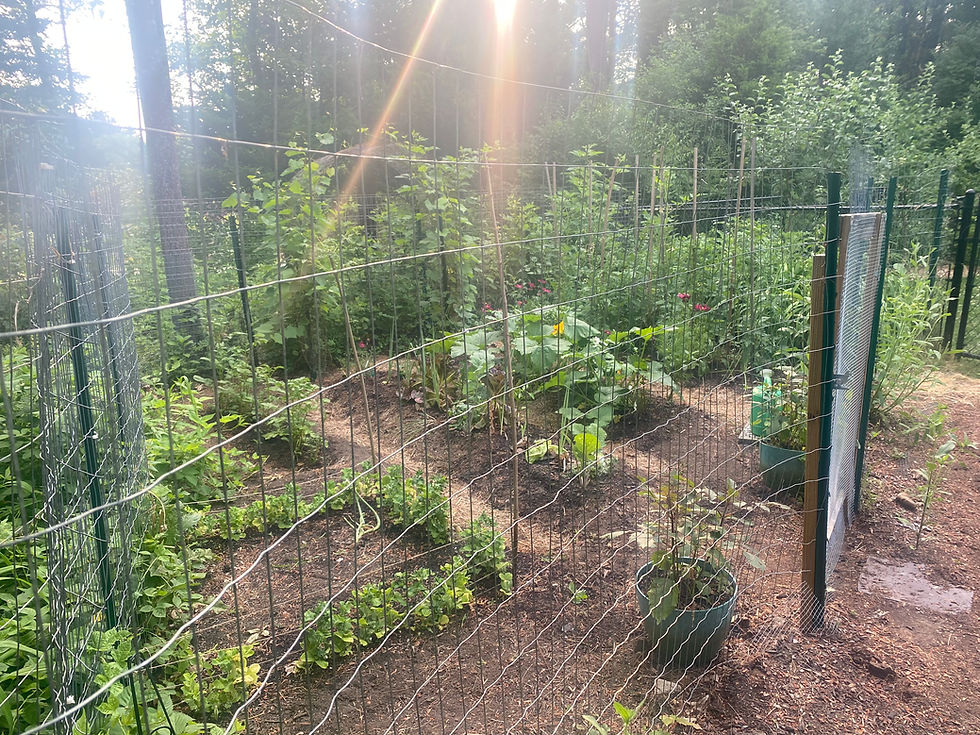Plan Your Vegetable Garden Now: The Importance of Crop Rotation & Companion Planting
- Bedhead

- Mar 4
- 3 min read
There might still be snow on the ground in Zone 6a, but it’s the perfect time to start planning your vegetable garden. A little thoughtful planning now sets the stage for healthier plants, higher yields, and fewer pest problems in the coming months. Two key techniques to incorporate? Crop rotation and companion planting. These strategies improve soil health, deter pests naturally, and help your garden thrive season after season.
Step 1: Review Last Year’s Garden Layout & Plan This Year’s
If you planted a garden last year, take note of where each crop grew. This will help you plan crop rotation and avoid planting the same family in the same spot.
Plan Your Crop Layout
Using a garden planner, notebook, or an app, sketch out your garden layout for this year. Consider factors like:
Sun exposure
Wind patterns
Water access
Companion planting combinations
Rotating plant families to new locations
Order Seeds & Supplies
February is prime time to order seeds before popular varieties sell out. Make sure to stock up on:
Vegetable & herb seeds
Seed-starting mix
Grow lights (if starting seeds indoors)
Seed trays and labels
Soil amendments (compost, organic fertilizer)
Start Seeds Indoors (Late February - Early March)
Certain crops should be started indoors this month to be ready for transplanting in spring:

8-10 weeks before last frost (Late February - Early March): Onions, leeks, celery
6-8 weeks before last frost (Early-Mid March): Peppers, tomatoes, broccoli, cabbage
4-6 weeks before last frost (Late March - Early April): Lettuce, kale, chard
Keep seedlings under grow lights or in a sunny south-facing window and water regularly.
Step 2: Implement Crop Rotation for a Healthier Garden
Crop rotation involves changing where plant families grow each year to maintain soil health and prevent disease.
Why Crop Rotation Matters
Prevents Nutrient Depletion: Some crops (like tomatoes and corn) are heavy feeders, while others (like beans and peas) replenish nitrogen. Rotating balances soil nutrients.
Reduces Pest & Disease Problems: Many pests and diseases overwinter in soil and attack the same plant families year after year. Moving crops helps break these cycles.
Improves Soil Structure: Alternating deep-rooted and shallow-rooted crops prevents compaction and promotes aeration.
A Simple 4-Year Crop Rotation Plan
Year 1: Heavy feeders (tomatoes, peppers, squash, cucumbers, corn)
Year 2: Root crops (carrots, beets, potatoes, onions)
Year 3: Legumes (peas, beans) to fix nitrogen in the soil
Year 4: Leafy greens and brassicas (lettuce, spinach, kale, cabbage)
💡 Short on Space? Rotate crops in raised beds or containers!
Step 3: Use Companion Planting for Natural Pest Control & Better Growth
Companion planting is the practice of growing mutually beneficial plants together. Some plants deter pests, others improve soil nutrients, and some even enhance flavor.
Best Companion Planting Pairs
Tomatoes + Basil: Basil enhances tomato flavor and repels hornworms.
Carrots + Onions: Onions repel carrot flies; carrots aerate the soil.
Corn + Beans + Squash (Three Sisters Method): Beans fix nitrogen, corn supports beans, and squash shades the soil.
Marigolds + Vegetables: Marigolds deter nematodes and attract pollinators.
Plants to Keep Apart
Tomatoes & Potatoes: Both are prone to blight.
Beans & Onions: Onions stunt bean growth.
Cabbage & Strawberries: Cabbage attracts pests that damage strawberries.
💡 Want a low-maintenance garden? Interplant flowers like calendula, nasturtiums, and chamomile to attract pollinators and deter pests.
Step 4: Preparing Your Garden for Early Spring Planting
By early March, you can start preparing for early planting as soon as the soil is workable.
When Can You Start Planting in Zone 6a?
Late March - Early April (4-6 weeks before last frost): Direct sow spinach, peas, radishes, and carrots.
Mid-April (2-3 weeks before last frost): Transplant kale, lettuce, and onions.
After Last Frost (Late April - Early May): Transplant tomatoes, peppers, and squash.
Soil Preparation Tips
Check Soil Temperature: Use a soil thermometer—most cool-season crops need at least 40°F soil to germinate.
Amend with Compost: Add organic compost to boost nutrients before planting.
Mulch Early Beds: Use straw or leaves to keep soil warm for early crops.
Final Tips for a Productive Vegetable Garden
Keep a Garden Journal: Track what works and what doesn’t.
Use Vertical Gardening: Trellises save space for vining crops like cucumbers.
Attract Pollinators: Grow flowers like sunflowers, cosmos, and lavender nearby.
Stay Flexible: Weather in Zone 6a can be unpredictable—adjust your planting schedule as needed!
By planning ahead and using crop rotation and companion planting, you’ll set yourself up for a thriving, productive vegetable garden.
Happy gardening!
















Comments